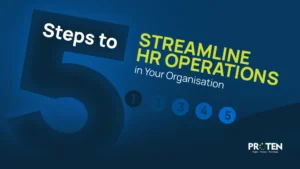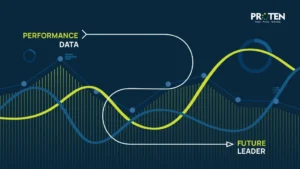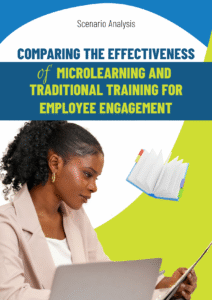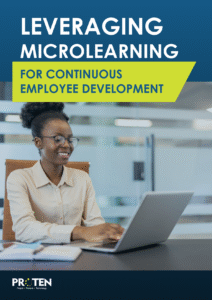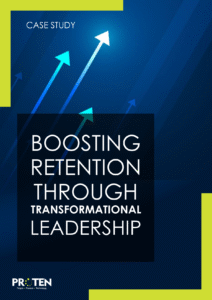For the first time, four generations work side by side: Baby Boomers, Gen X, Millennials, and Gen Z. This rich mix creates one of the most diverse workplaces in history. However, leading a multigenerational workforce comes with unique challenges. You’re navigating vastly different values, communication styles, work ethics, and career expectations, all while striving for business results.
Unsurprisingly, 60% of leaders say managing intergenerational teams is one of their top challenges today. But here’s the opportunity: companies that embrace generational diversity are already at an advantage. Tapping into each generation’s strengths fuels innovation, strengthens decision-making, and fosters knowledge sharing.
This explores practical strategies to build cohesion across generations, helping you create a thriving, collaborative multigenerational workforce. Let’s dive in.
1. Understand the Generational Differences, And Avoid Stereotypes
To lead effectively, you first need to understand the core traits and values driving each generation without falling into the trap of stereotypes. Here’s a brief overview:
- Baby Boomers: hard-working, competitive, favour structured environments, and prefer phone or face-to-face communication.
- Generation X: Independent, adaptable, sceptical of authority, and value work-life balance.
- Millennials: purpose-driven, tech-savvy, feedback-seeking, and prefer digital communication.
- Generation Z: entrepreneurial, socially conscious, digital natives, with a preference for instant communication and flexibility.
However, it’s critical to resist assumptions. Not every Millennial needs instant gratification, and not every Boomer resists change. Generalizations limit your ability to see individual strengths.
Instead, approach your people with curiosity. What motivates them? What skills do they bring? By focusing on individual strengths rather than generational labels, you unlock potential—and avoid costly misunderstandings.
Statistic: According to Deloitte, 70% of employees say feeling misunderstood by coworkers of different generations negatively impacts their engagement.
2. Customize Communication for Impact
Communication preferences vary widely across generations. While Gen Z may thrive on Slack messages, Baby Boomers might prefer a phone call. Without an intentional communication strategy, misalignment is inevitable.
Here’s a quick breakdown:
- Baby Boomers: Favour formal communication, face-to-face meetings, and phone calls.
- Gen X: I prefer direct, concise communication via email or in person.
- Millennials and Gen Z: Lean into quick, digital platforms like chat apps, video calls, and social media.
To bridge these gaps, implement inclusive communication practices:
- Use multiple channels to deliver messages, emails, video updates, messaging apps, and in-person meetings.
- Steer clear of jargon or overly technical language that alienates certain groups.
- Establish feedback loops that promote active listening. Encourage team members to share how they best receive information.
Most importantly, ask your teams directly: What communication methods work best for you? You’ll be surprised how this simple step boosts engagement.
3. Foster Cross-Generational Collaboration
One of the most powerful ways to build a cohesive multigenerational workforce is by creating intentional opportunities for cross-generational collaboration. You have a goldmine of experience, skills, and fresh ideas waiting to be unlocked, but only if you break down silos.
Start with mentorship programs, but think beyond traditional top-down models. Reverse mentorship, where younger employees coach senior leaders on technology trends or social shifts, builds mutual respect and learning.
Additionally, design mixed-age project teams to spark diverse thinking. You’ll quickly see how seasoned employees’ deep industry knowledge combines with younger employees’ fresh perspectives to create stronger solutions.
Don’t underestimate the power of storytelling either. Create informal spaces such as brown bag lunches and storytelling sessions where employees share their career journeys and life lessons. It humanizes your workforce and strengthens connections.
4. Create Flexible Work and Growth Opportunities
If you want to engage every generation, offering flexible work and learning options is non-negotiable. Different generations prioritise flexibility, career progression, and learning in distinct ways.
Younger employees may demand remote work, while older generations might prefer office interaction. Some seek rapid growth; others value stability and mentorship.
Design your policies to accommodate these differences:
- Offer flexible schedules, remote work, and hybrid models.
- Provide learning opportunities in various formats such as online courses, in-person workshops, microlearning, and peer-to-peer learning.
- Create clear leadership pathways for all ages. Avoid falling into the trap of promoting only one age group based on outdated assumptions about ambition or energy.
When employees see that growth and flexibility are accessible to everyone, they stay committed. A study found that 94% of employees would stay longer at a company that invests in their learning and development.
5. Recognize and Celebrate Generational Diversity
Recognition is a powerful engagement tool, but it needs to be inclusive. Celebrate each generation’s unique contributions during performance reviews, team meetings, and company-wide events.
Build age-inclusive initiatives:
- Train managers to spot and overcome age bias.
- Embed generational diversity in your DEI (Diversity, Equity, and Inclusion) programs.
- Promote empathy and respect by equipping leaders to navigate generational differences without judgment.
When employees feel seen and valued for who they are, including their generational identity, they are more likely to give their best.
Conclusion
Managing a multigenerational workforce is now the reality of your organisation. But instead of viewing it as a challenge, see it for what it truly is: a strategic asset. The diversity of thought, experience, and perspective in your organisation is a catalyst for growth, innovation, and resilience.
By understanding generational differences, communicating effectively, fostering collaboration, providing flexible growth opportunities, and celebrating diversity, you create a workplace where every generation thrives.
Need help building generational harmony in your organisation? Our HR advisory services specialise in creating inclusive workplaces where every generation thrives. Book a free consultation today and start turning generational differences into your competitive advantage.



